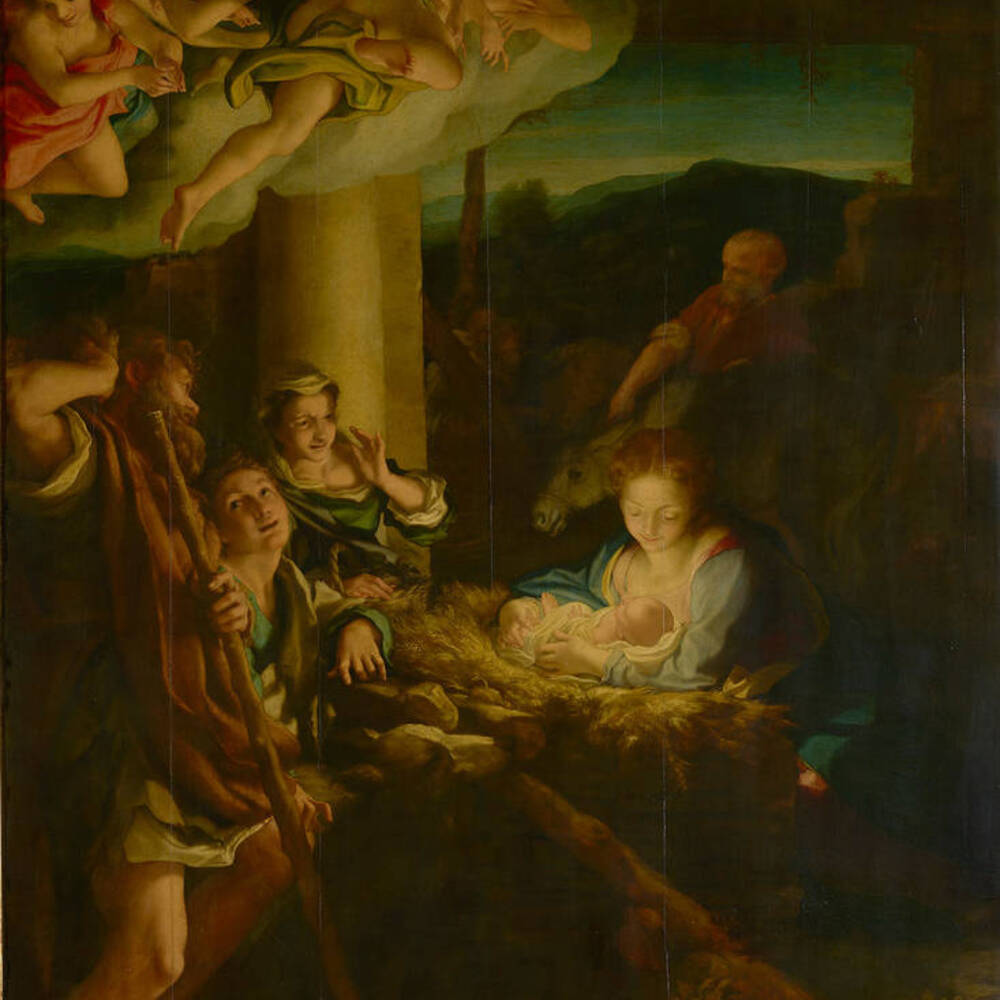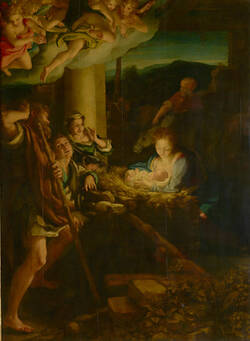Rarely have Christ’s words “I am the light of the world” found such memorable visual expression. All light emanates from the newborn infant in the stable at Bethlehem, thus manifesting his divine nature. He is lovingly held in his mother’s arms. The shepherds respond to the birth of God with heartfelt joy and the angels are jubilant. Rather than showing a “sacra conversazione”, this altarpiece, painted for a chapel in San Prospero in Reggio Emilia, portrays a specific narrative, that of the Nativity.
Further Media
Some of Correggio’s figures are moving extremely energetically – not only the powerfully-built shepherd just arriving, but also the angels romping in the clouds. So exuberant is their joy, they form nothing less than a knot of bodies. This gives Correggio a chance to show off his outstanding skills as an artist, painting the wildly moving angels at an angle from the back, from the side, and from the front – always in perfectly foreshortened perspective.
Such twisted bodies would have still been inconceivable in a high Renaissance painting – as you can tell, if you compare this with the example of Raphael’s Sistine Madonna. Raphael’s painting dates from less than 20 years before Correggio’s Holy Night, yet in comparison it seems to exude a mood of reflective calm. The figures in the Sistine Madonna are very symmetrically arranged, and any movement at all is soft and gentle.
The contrast between these works illustrates a major watershed in art as Correggio’s painting powerfully proclaims an entirely new style – Mannerism.
Correggio painted the Holy Night for a family chapel in a church in Reggio Emilia, a region in Italy. The painting was so outstanding that soon others were interested in acquiring it. The owners, though, refused to sell. Years later, Francesco I d’ Este, Duke of Modena and Reggio, was so obsessed with the painting that he had it stolen and added it to his own collection, where it stayed for a good hundred years.
But in 1746, when Francesco’s grandson ran into money problems, he was forced to sell the collection.
While in Italy on the Grand Tour, August III discovered Correggio’s works and did everything he could to acquire the Holy Night for his Dresden collection. After tough negotiations, he agreed to pay an enormous sum of money for no less than one hundred works from the gallery of the Dukes of Modena and Reggio. In this way, at one blow, he catapulted his collection onto the international stage. Shortly afterwards, the inventory of the Dresden collection proudly noted:
“Painting on panel with the nativity of Jesus, precisely that painting spoken of in all of Europe as ‘the famous Night’ by Correggio.”
- Location & Dating
- c. 1528/30
- Material & Technique
- Oil on poplar panel
- Dimenions
- 256,5 x 188 cm
- Museum
- Gemäldegalerie Alte Meister
- Inventory number
- Gal.-Nr. 152

